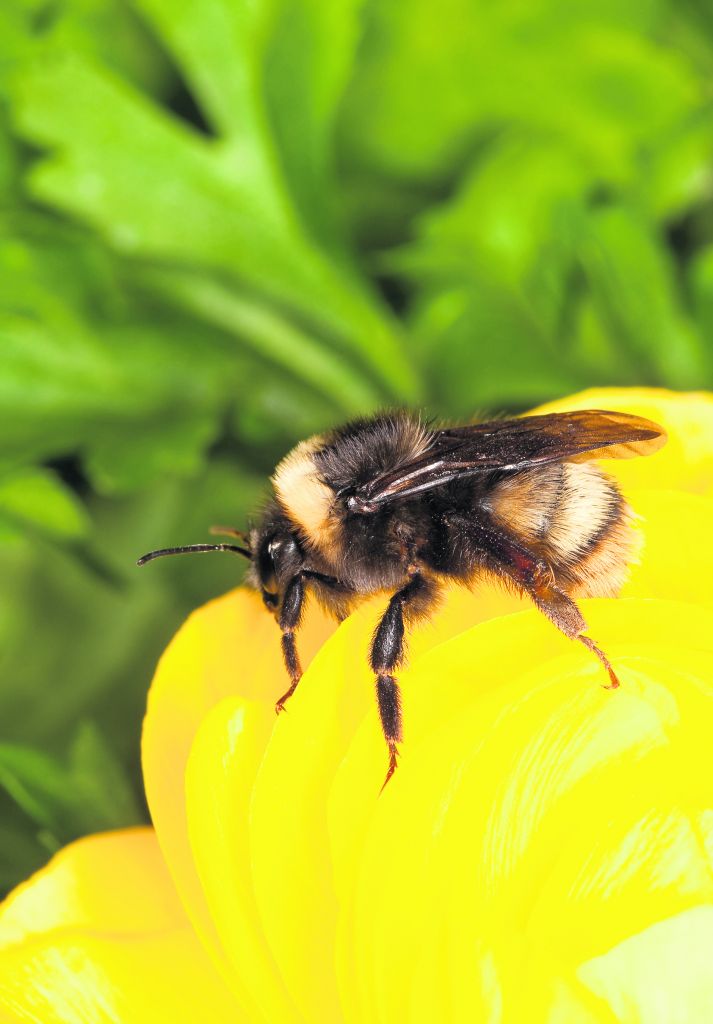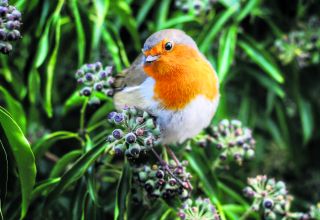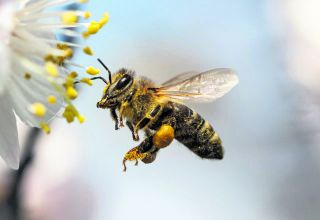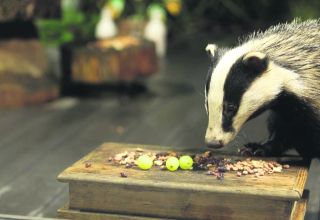Gardeners are overwhelmingly leading the fight back to reverse the threat to bumblebees which has seen some species become extinct and more threatened. One obvious answer is just more flowers, plants and trees.
The story of bumblebees is sadly now one of decline.
Two species became extinct in the UK during the 20th century: Cullum’s bumblebee (Bombus cullumanus) last seen on the Berkshire Downs in 1941, and the short-haired bumblebee (Bombus subterraneus), last seen at Dungeness in 1988 and declared extinct in 2000.
A further eight appear on conservation priority species lists.
These declines stem from large-scale changes to the way the countryside is managed. The mechanisation of agriculture, then later the demand for cheap food, the need for ever-greater quantities of food and crops and the use of pesticides have conspired to hugely reduce the nationwide density of the flowering plants that bumblebees feed on and sheltered corners they nest and overwinter in.
As bumblebees only feed on flowers, they need more plants than equivalent species which are able to also eat leaves or roots. They also, because of their colony-based lifestyle, need enough flowers available to sustain 40-400 sterile worker bees for the lifespan of the colony, normally from March to October, to produce the new reproductive individuals – males and queens – at the end of the colony lifecycle.
Gardeners are at the forefront of helping the fight back to re-establish bumblebees. It is entirely possible for any of us to help bumblebees without having a big garden; the simplest thing to do is to plant some bee-friendly plants in your garden, to flower between March and September. As gardens cover over one million acres in the UK, this presents a great opportunity to provide food for bumblebees. By using these spaces more effectively, gardeners have the ability to easily and reasonably make landscape friendlier to bumblebees, and help reverse the declines of the past century.
However, certain plants have flower shapes that bumblebees cannot use. For example, some flowers have petals that form long tunnels which are too long or narrow for the bees to feed from. Similarly, flowers with multiple tightly packed heads offer bees very little accessible food.
Other flowers may not be suitable because they produce little or no pollen and nectar, often as a result of selective breeding by horticulturalists for their pleasing appearance. Plants like pansies and double begonias offer little for bumblebees and other pollinators.
Even your humble lawn can provide food for bumblebees if you allow species often seen as ‘weeds’ to flower.
Bees love clover, dandelion, bird’s foot trefoil, vetch and cowslips. Traditional Victorian thyme lawns can provide an interesting low-maintenance bee-friendly alternative.
You could also try leaving all or a small section of the lawn to grow wild. This can provide ground-nesting bumblebee species, such as the Common carder bee, space to nest beneath the long grass.

‘As bumblebees only feed on flowers, they need more plants than equivalent species which are able to also eat leaves or roots’.
There are practical things all gardeners can do:
Grow your own herbs
Bumblebees love the fragrant, flowery tops of herbs.
Most herbs are adaptable to a wide range of soil and growing conditions and, for the most part, easy to grow. They do not, however, do well in poorly drained soil and most of them prefer full sun, at least six to eight hours a day, as do most bees. When creating a bee friendly herb garden, select sun-loving flowering herbs for bees. Luckily, there are quite a few herbs that attract bees to choose from. Perennials will give you more value, but you can also include some annuals like sweet basil or cilantro. Bee balm, borage, catnip, chamomile, coriander/cilantro, fennel, lavender, mint, rosemary, sage and thyme.
Natural gardening
The way forward is wild hedges and trees. In addition to flowers, these environments are very friendly for bumblebees and will help them thrive. So simply grow more flowers, shrubs and trees that provide nectar and pollen as food for bees and other pollinators throughout the year.
The best habitats for bumblebees are those that offer plenty of flowers to feed on during the entire active phase of the bees’ lifecycle. This will ensure that there is a good supply of pollen at all of the crucial times:
- When the queens are establishing nests
- When nests are growing
- When nests are producing new queens and males
- When queens are fattening up ready for hibernation
For example, pussy willow, primroses and crocuses in spring, lavenders, meadow cranesbill and ox-eye daisies in summer, ivy and hebes in autumn, and mahonia shrubs and cyclamen in winter. We just need more plants rich in pollen and nectar in all our gardens, balconies and allotments. The important principle is to make sure you select and grow a wide range of plants that produce pollen and nectar resources throughout the year. This will help as many pollinators as possible. Plants such as viper’s bugloss, comfrey and bird’s foot trefoil are loved by bees.
Avoid using chemicals
A big killer of bumblebees is the destruction of habitat and the spraying of chemical pesticides and other substances which poison them. Accepting and avoiding pests, diseases and weeds by good practice in cultivation methods, cultivar selection, garden hygiene and encouraging or introducing natural enemies should be the first line of control for the gardener. The top tip for going chemical-free is to ensure your garden has as much variety as possible, so that no one species will be able to gain control. The more complex and varied your garden is, the more resilient it becomes.
Understand bumblebees more
Awareness of bumblebees and the immense struggle they are facing and what you can do to help them is key to saving the species. These large, hairy bees are generally black with degrees of yellow banding. If you look closely at them in your garden you will probably see several species. Common bumblebees include garden, buff tailed, red tailed white tailed and field bumblebees. They are social insects living in colonies of up to 200 workers. Queens hibernate underground during the winter emerging in spring to find suitable nests. The tongue and mouthparts of bumblebees are covered in tiny hairs and these hairs have pores in them. Molecules pass through these pores and stick to receptor sites on sensory cells. This is how the bee tastes and smells.
Bombus hortorum has the longest tongue which can reach just two centimetres when fully stretched. When the bumblebee drinks nectar the sheath is moved so it is facing the entrance of the flower. The bumblebee then moves towards the nectar and the tongue itself shoots in and out soaking up the nectar.
Bumblebees are not aggressive and will only sting if they feel threatened.
Revive a ëdyingí bumblebee
To revive the bee, mix two tablespoons of white sugar with one tablespoon of water, place the bee on this spoon and hopefully, it’ll gather enough energy to return to the hive and recover more strongly.
Crack pollinators
A bumblebee’s value lies in its pollination powers. For zero reward from us, they pollinate 80per-cent of our wildflowers and 84per-cent of crops. These voluntary workers contribute an estimated £510m per year to Britain’s economy. Particularly special are their ‘buzz pollination’ skills. Crops such as tomatoes, aubergines and kiwis hold tight onto their pollen and bumblebees are the only UK creatures that can get them to part with it –a rapid vibrating motion which releases large amounts of pollen onto the bee. Bumblebees are much more efficient pollinators than honeybees. They mainly forage for pollen rather than nectar, and transfer more pollen to the pistils with each visit.
Bumblebees also have long seasons. They are among the first of the bee species to emerge in the year, and some species may forage until November. They are therefore very important pollinators of early and winter crops.
Bumblebees are not pests. They’re largely passive creatures who really have no interest in dive-bombing your picnic. Unlike honey bees, they can sting more than once, but unless you do something to upset them such as disturb their home, they rarely do so. A nest won’t damage property (they don’t guzzle wood like wasps) and don’t worry, if you see them crowding round a nest: there will be amorous males hoping to get lucky with the queen – and males can’t sting at all.
What you should do if a bumblebee stings you
Bee stings can usually be treated quickly and easily at home. If you do happen to get stung, remain calm and walk away from the area. Work on removing the sting from your skin, you should try and scrape it out to prevent the release of venom. Once the sting is removed, wash the area with soap and water and apply a cold compress, such as an ice pack for at least 10 minutes for mild relief. Avoid scratching the area to reduce the risk of infection.
Why bumblebees are perfect pollinators
- Their furry legs and bodies easily collect pollen that is transferred from the male to female parts, thus enabling pollination to occur.
- The variety and size and shape of bee bodies, meaning there’s a bee suitable for most flower pollination tasks.
- The fact that they have evolved methods to deal with flowers that do not easily release the pollen, for example by using techniques such as buzz pollination.
- Bees absolutely must visit flowers – because they need nectar and pollen
- Different bee species emerge at different times of the year to suit varying flowering periods.
- They provide their pollination services for free!












